15 Nostalgic Car Features You'll Never Forget
We'll never be able to forget these classic car gems.
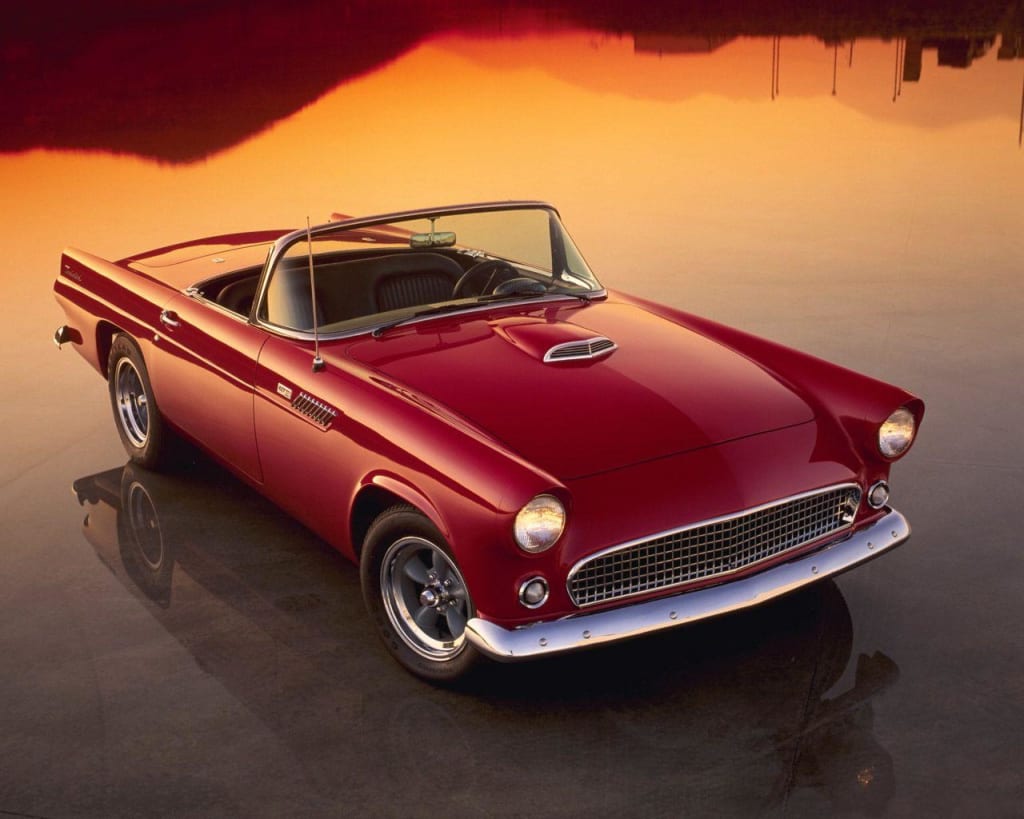
If you've been driving a long time, you may recognize some of these older car features, and even miss them when driving newer cars. Younger people may not even realize that many of the standard features and functions in a newer car have evolved over time, or only very recently been added.
Many of these changes and developments have been made to make driving safer. Seat belts were not even standard on cars purchased until 1958, something that is unimaginable today. Have a look through these classic car features that you won't find today unless you're making a classic purchase, and see how many you can remember.
Roll-Down Windows
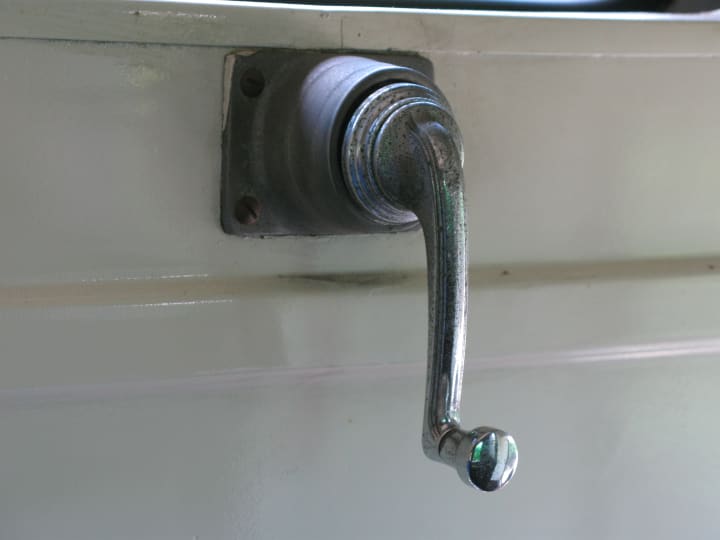
If you've ever wondered why people say "roll down the windows", this window crank from an older car model should give you an idea.
New car windows roll down at the push of a button with complete ease. But did you ever wonder why you hear people ask to "roll down the windows"?In older cars, each opening window had a crank that you'd have to turn by hand to pull down the window, and it was your own strength and force that made the glass move. This feature is one that many people don't miss, since it is much easier to control windows with a button while driving. That said, they weren't susceptible to fuse problems and lack of power, like windows of today are.
Hidden Headlights
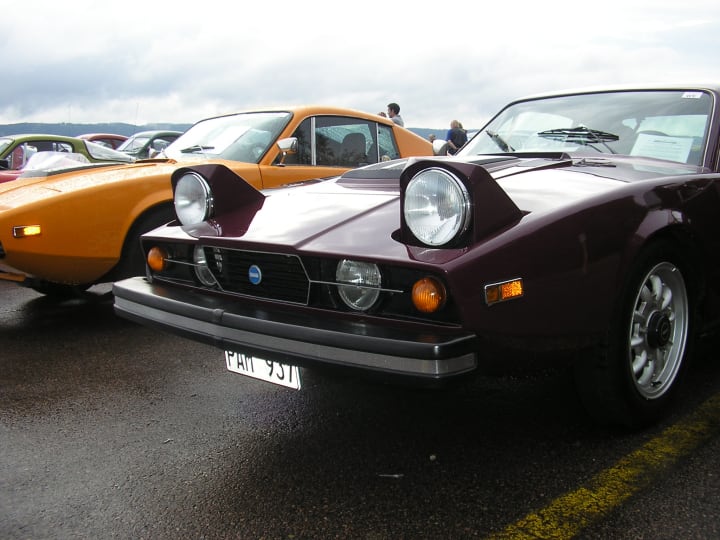
Pop-up headlamps were very popular from the 1970s to 1990s
Between the 1970s and 1990s, a popular feature on cars was to include pop-up headlights, or headlamps (though they were available as early as 1936 on some models). When not in use, these lights would move to sit flush with the body of the car, being hidden away. This feature was loved for its promise of making the car aerodynamic, and for the cool moving feature that changed on the car from day to night. Many car collectors still focus on this feature in their collectionsSadly, since about 2004, this feature can't be found on any new car models. This is mostly related to concerns over safety laws, with lights required during many hours of the day, and worries that malfunction could leave drivers without proper lighting at night.
Gas caps at the rear
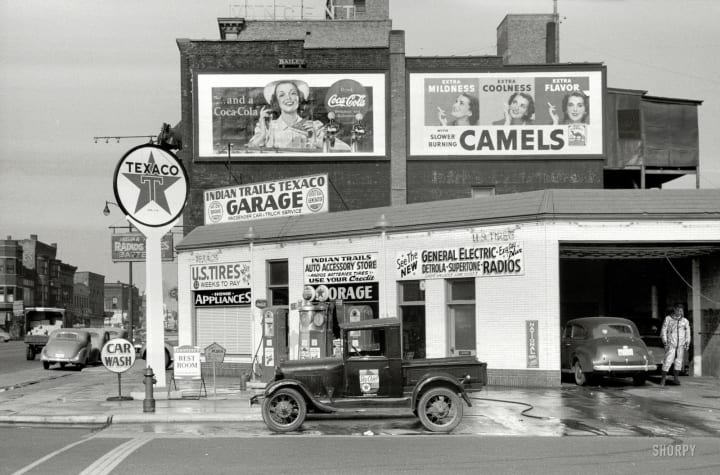
With rear gas caps, there was no mistaking which side you needed to fill up on
There was a time where you didn't have to play the left-side vs. right-side roulette at the gas station. Most cars used to have their gas caps in the rear, hidden behind the rear license plate.
As car design changed over the years, manufacturers chose a number of different locations to hide the fuel filler on cars, with some hidden behind tail lights and in the body of the cars. Now, for safety and standardization, most fuel fillers are located on the rear of the vehicle to the left or right, and many can't be opened manually.
Headlight dimmer switches
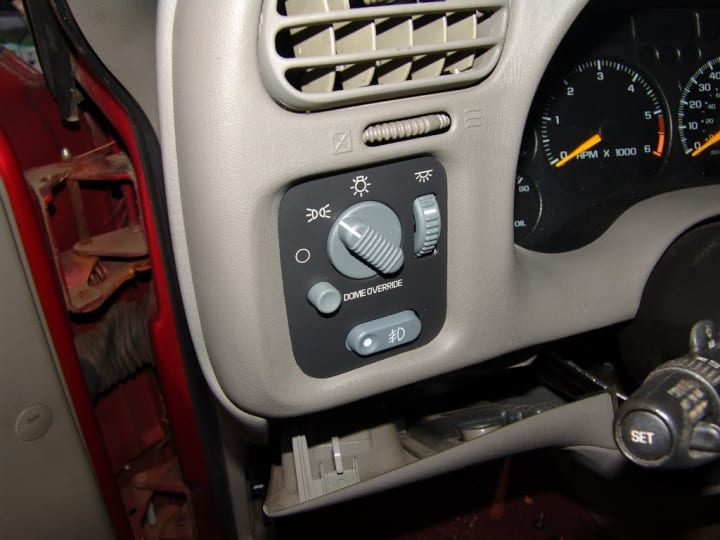
When car design left more space between pedals on the driver's side, it made sense to add the dimmer feature to the floor of the car.
Most new cars have light adjustment set to automatic levels, and hand controlled from the column. But there was a time when cars actually required drivers to control headlights with their feet.
Until the 1970s, a button or pedal was standard on the floor of cars, allowing drivers to dim their headlights or put on their high beams with their feet. The idea was that there would be one less reason for drivers to remove their hands from the steering wheel, which was far more important in an era before automatic steering.
Shoulder belts and lap belts
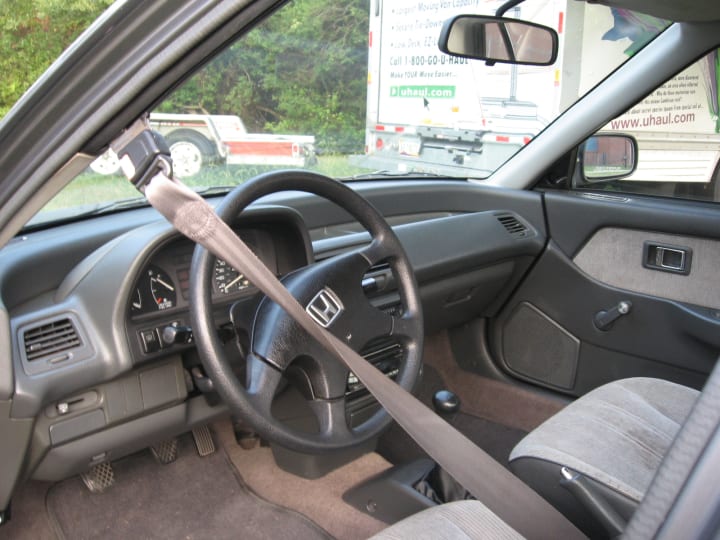
Unlike this seat belt system, most cars have a single strap seat belt that protects the upper and lower body.
The first cars did not even come standard with seat belts, and it took a long time for seat belt safety to develop to the stage it is at today. It wasn't until the 1950s, when Sweden began to offer seat belts in every vehicle and advocate for their importance, that the public became aware of the risk. This prompted standardized lap belts to be installed in cars.
In the 1960s, with more traffic and more statistics on the life-saving potential of seat belts, shoulder belts also became standard in many vehicles. These two items were installed separately in cars, and were completely voluntary for use. Today, every vehicle seat comes standard with a full seat belt, and has the addition of air bags and other features.
Motorized seat belts
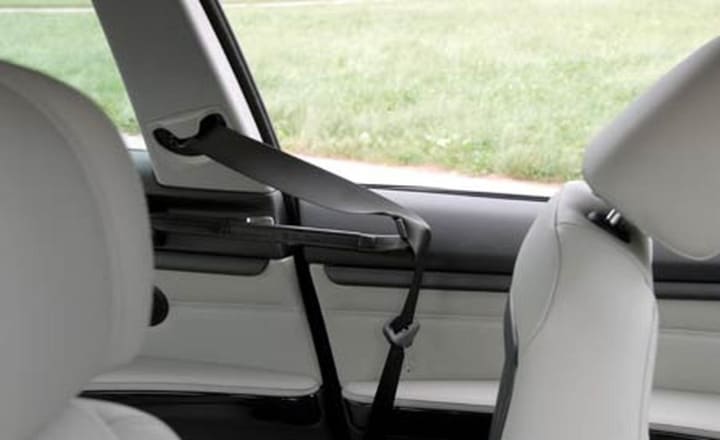
Motorized seat belts have mostly been abandoned as a car feature
Motorized seat belts were a feature that was tried in cars, sometimes with separate shoulder and lap belts operated differently. While the idea was to encourage automatic use of the belt, many people would use the automatic shoulder belt, but neglect to put on the lap belt that was vital to protecting them.
The practice of including motorized belts has been abandoned mainly because they serve no purpose. Motorized belts offered inferior crash protection, were more expensive to install, and required more frequent repairs than standard belts. This is one feature that really isn't missed.
Manual radio station presets

If you were lucky, your radio came with 5 to 6 buttons you could set to your favorite radio station
Your new car may come with digital radio presets, but there was a day where you had to program your favorite stations into the radio, or face scrolling through static for half your ride.
If you think it is hard to find something good to listen to with satellite radio, think yourself lucky that you weren't confined to six radio stations (that all went to commercial at the same time).
Windows for ventilation
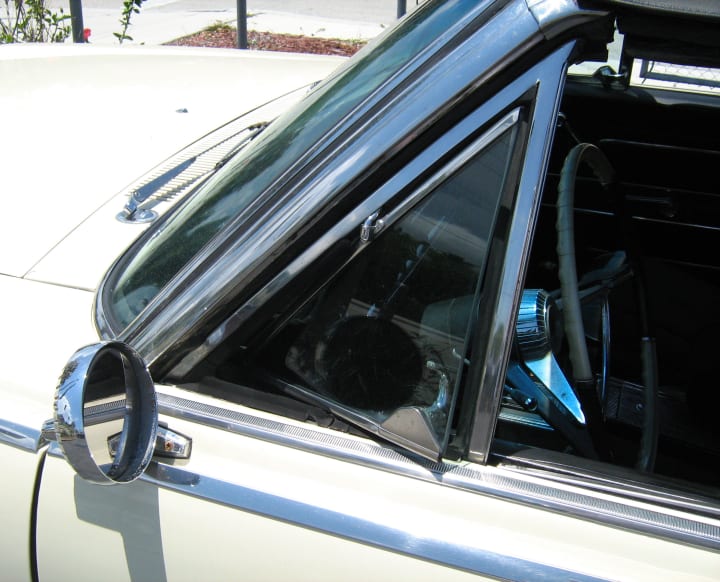
In a time before air conditioning, vent windows served a practical purpose
Vent windows are a feature that has mostly disappeared on cars. From the 1930s to the 1970s, some cars included a small, separate window in the front door frame that could be opened for ventilation. This was actually useful in the days of smoking heavily with no air conditioning. But today, the turbulence, noise, and dirt allowed in by these windows far outweigh the benefits.
Vent windows did make a brief comeback in the 1990s and 2000s, with mini vans growing in popularity. Many of these vans had windows that could not fully open, and provided venting for temperature relief. As air conditioning and automatic windows have become standard, this feature has disappeared.
Radios everywhere
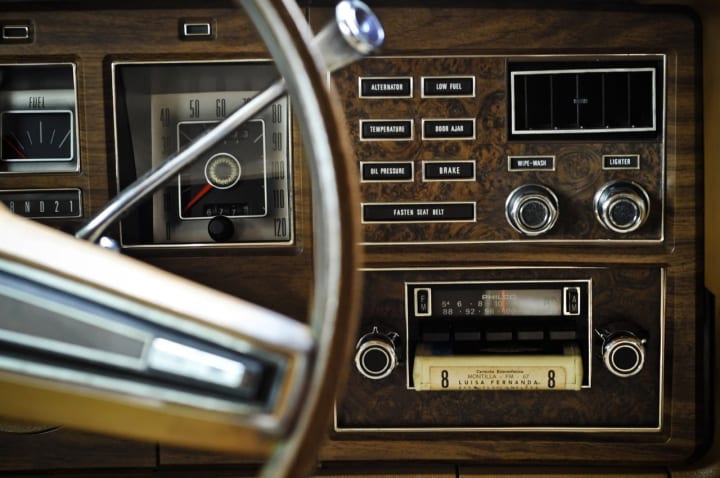
As car manufacturers experimented with design, radios were sometimes installed behind the steering wheel, or sideways for aesthetic appeal.
The car radio has usually been mounted somewhere in front of the driver and near the dash, but it has popped up in many spots, and even been installed sideways in the past.
As manufacturers experimented with design, radios were sometimes put behind or on the steering wheel, and unique placement was often a talking-point and selling-feature for a new car. Now, radios have moved to digital placement that is usually placed in the center console.
Cigarette lighters and ashtrays
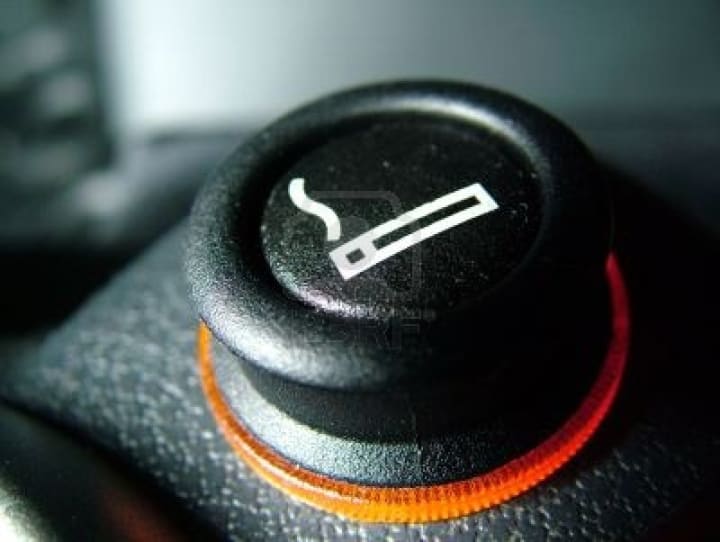
Cigarette lighter receptacles were first featured in 1921, and were standard in many cars after 1925
In-car cigarette lighters were available earlier than you might think! First introduced in 1921, this was a standard car feature from 1925 onward (note, this is much earlier than seat belts became standard). Smoking was a way of life for most people, and there was no hesitance to light up in the car. It was a very practical addition for most people. Of course, alongside these lighters came ashtrays, which were usually featured on centre consoles and doors.
In the 1960s, more modern electric lighters were possible because of the power required for other features. In the 1990s, as anti-smoking campaigns took effect, many adapters were on the market that could allow you to use your lighter port for other uses. By the early 2000s, this design was removed.
Some models will allow you to include a lighter and ashtray, but this is almost never a standard feature on cars, particularly given new laws about smoking with children in a vehicle.
Manual door locks and trunk release

Manual car door locks haven't been gone long. Every passenger would have to lock their door when leaving the car.
Before electronic features were standard on cars, door locks were manual, and so was opening the trunk. This wasn't so long ago, and you might have encountered this in cars that have lasted since the 1990s.
With manual locks, each door has to be locked and unlocked by hand. This means that the driver had to unlock the door for their passengers, and passengers had to be mindful to lock up behind them (which was easy to forget).
Most cars have a way to unlock the trunk from inside or from your key ring now, but at one point, the driver would have to get out, unlock the trunk with a key, and lift manually to gain access.
Bench seating
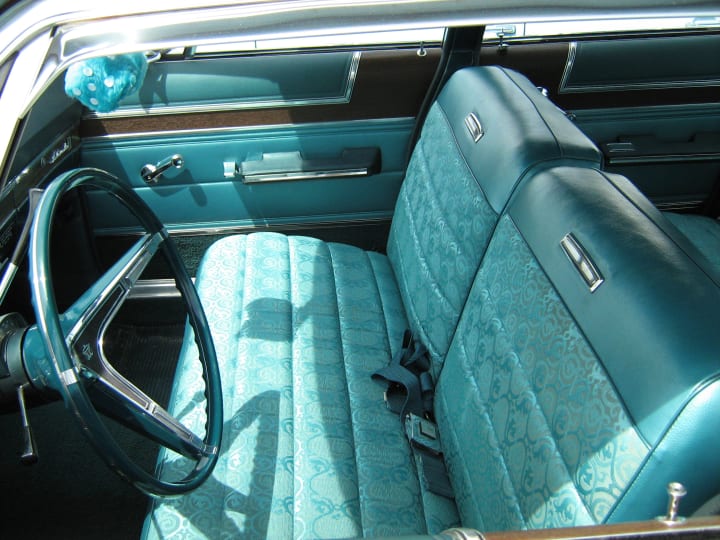
Bench seating was once standard in the days when people cared less about seat belts.
Bench seating in American cars was standard until the 1950s, when European imports began to arrive, and brought individual seats into fashion.
Bench seats were common because they gave room for a third passenger in the front of the car. In the days where seat belt usage wasn't mandatory, this wasn't a problem. But even as seat belt usage became more common, belts were added and the seat lived on in many American models.
As car controls have moved to the center console, and safety concerns have become so prominent, bench seating has become a thing of the past. As of 2013, there are no new cars available in North America with bench seating.
Horn rings
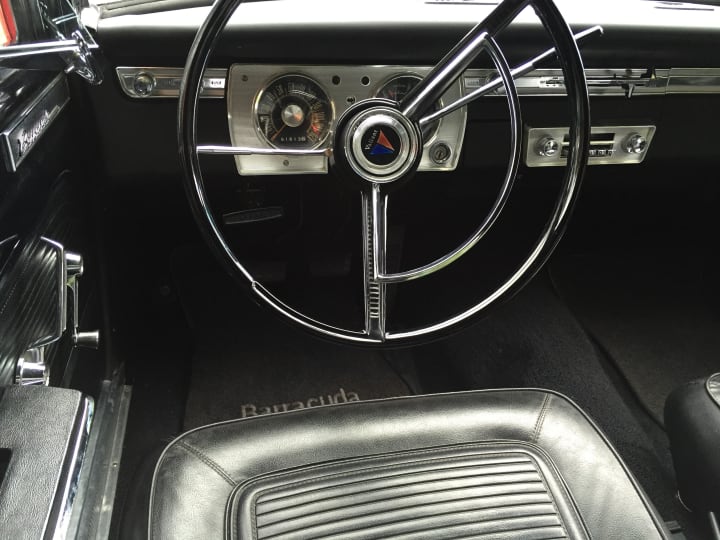
Some manufacturers made horn rings available so drivers could honk the horn with their thumb without taking their hands off the wheel.
In the 1960s, it was briefly a trend to add horn rings to steering wheels, to make honking the horn safer. The concern was that moving hands from the steering wheel to honk the horn might make it more likely that the driver might have an accident.
This concern might seem over the top, but considering how much arm strength was needed to steer a car before automatic steering, there was some logic behind this addition.
Control knobs and levers for everything
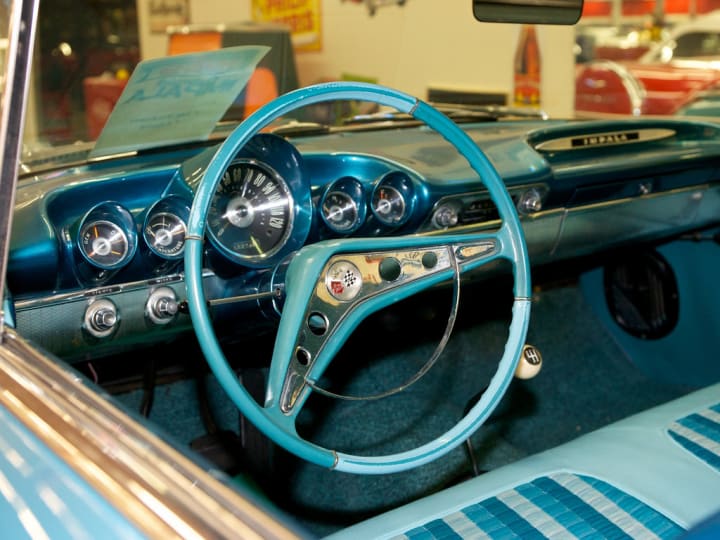
At first glance, operating a classic car was a very complicated operation.
Many of the features on a modern car are controlled by the push of a button, but at one point, cars were ridden with knobs, levers, and slides to activate different things.
Whether it was sliding a lever to turn on the heat, turning a knob to allow ventilation, cranking down the window while driving, or pushing a button to heat up your cigarette lighter, operating older cars took a lot of coordination and physical manipulation.
Rear-hinged doors
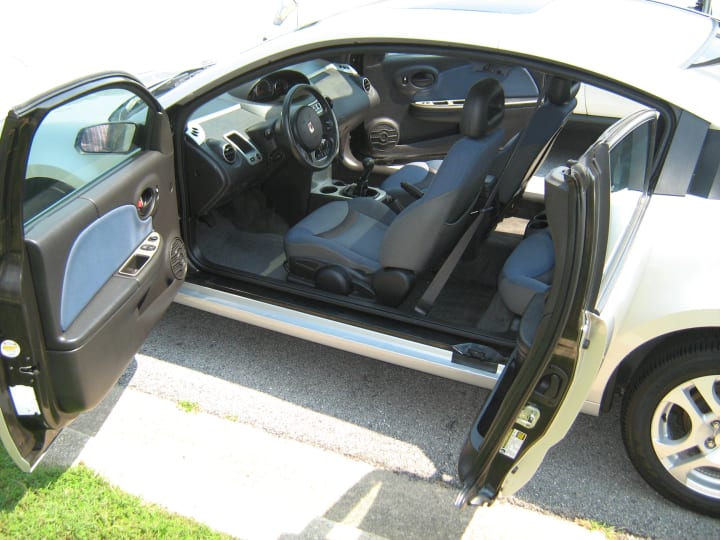
Rear-hinged passenger door design was actually borrowed from horse-drawn carriages
Rear-hinged doors are something that haven't been featured on mass-produced cars since the 1970s. Most popular in the 1930s, this particular feature is considered so dangerous that they have gained the nickname "suicide doors".
These suicide doors were most popular in the 1930s, and remined on some models through the 1960s. Concerns over the danger of passengers being hit by passing motorists, and accidental opening of the doors from within are the reason they fell out of popularity. Newer version of these doors, which cannot be opened until the front door is opened, have been appearing in some newer car models again.
Looking through this list of features, it is easy to see how many of these became obsolete, or have been replaced more efficiently. The change in car design has resulted in much higher safety standards, and more efficient use of fuel and power when driving. But it is still understandable if you're nostalgic for pop-up headlights.
About the Creator
Annie Kiely
Annie Kiely is a freelance writer, editor and researcher who lives in the 'burbs of Toronto with her pets and her partner. Annie is an advocate for wellness, mental health education, and literacy. She loves animals and gardening (and food).




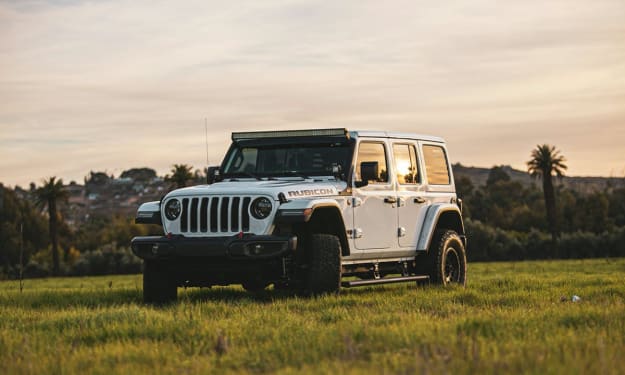
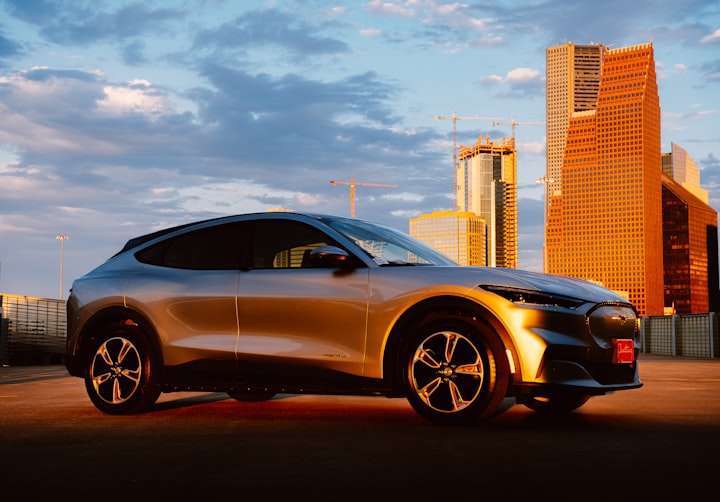

Comments
There are no comments for this story
Be the first to respond and start the conversation.